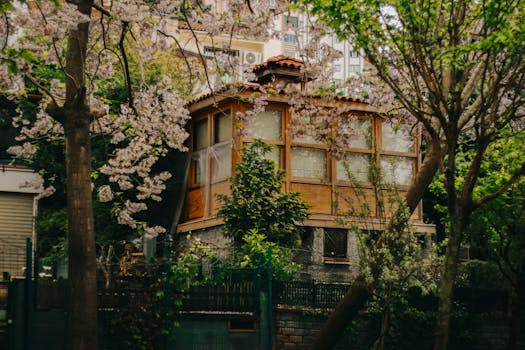
Urban Green Spaces: The Future of Outdoor Living in European Cities by 2025
Urban Green Spaces are becoming increasingly important in European cities, and for good reason. As the world becomes more urbanized, the need for green spaces in cities is becoming more pressing. In this article, we will explore the future of outdoor living in European cities and how urban green spaces will play a crucial role in shaping it.
What are Urban Green Spaces?
Urban Green Spaces refer to parks, gardens, and other green areas in urban environments. These spaces provide a range of benefits, including improved air quality, reduced noise pollution, and increased biodiversity. They also offer opportunities for recreation, socialization, and relaxation, making them an essential component of urban planning.
The Benefits of Urban Green Spaces
Urban Green Spaces have numerous benefits for both the environment and human health. Some of the key benefits include:
- Improved air quality: Urban Green Spaces help to absorb pollutants and particulate matter, improving air quality and reducing the risk of respiratory problems.
- Reduced noise pollution: Green spaces can act as a buffer against noise pollution, creating a more peaceful environment for residents.
- Increased biodiversity: Urban Green Spaces provide habitats for a range of plant and animal species, helping to maintain biodiversity in urban areas.
- Improved mental health: Spending time in green spaces has been shown to reduce stress levels, improve mood, and even reduce symptoms of anxiety and depression.
European Cities Leading the Way
Many European cities are already leading the way in terms of urban green spaces. Cities such as Copenhagen, Stockholm, and Amsterdam have invested heavily in green infrastructure, creating extensive networks of parks, gardens, and green roofs. These cities are not only improving the environment and human health but also enhancing the aesthetic appeal of their urban landscapes.
The Future of Outdoor Living in European Cities
As we look to the future, it is clear that urban green spaces will play a crucial role in shaping outdoor living in European cities. With the increasing urbanization of populations, the need for green spaces will only continue to grow. By 2025, we can expect to see even more innovative and sustainable approaches to urban green space design, including:
- Green roofs and walls: These will become increasingly common, providing additional green space and helping to reduce urban heat island effects.
- Urban forests: Cities will invest in large-scale tree planting initiatives, creating extensive urban forests that provide shade, improve air quality, and support biodiversity.
- Community-led green spaces: Community-led initiatives will become more prevalent, empowering local residents to take ownership of their green spaces and create vibrant, inclusive environments.
Conclusion
Urban Green Spaces are the future of outdoor living in European cities. As we move towards 2025, it is essential that we prioritize the creation and maintenance of these spaces, investing in innovative and sustainable design approaches that benefit both the environment and human health. By doing so, we can create thriving, resilient cities that provide high quality of life for all residents.


